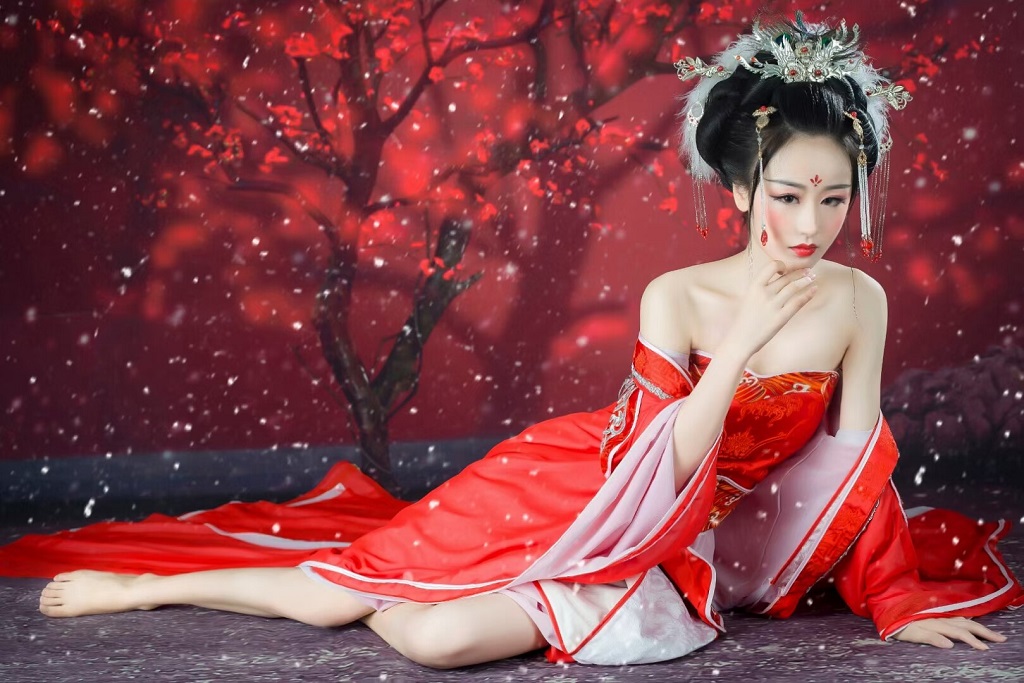A Deep Dive into Chinese wedding customs
When it comes to weddings, every culture has its unique traditions, and China is no exception. Chinese weddings are a blend of age-old traditions, each carefully timed to ensure a prosperous union.
1. The Proposal and Betrothal Gifts – or 'Nàcài' (纳彩)
In China, once a couple decides to marry, the groom's family presents betrothal gifts or 'nàcài' to the bride's family. This usually includes food and cakes, with the most traditional one being 'dragon and phoenix cakes'. If the bride's family accepts the gifts, it indicates their approval of the marriage. However, if the gifts are initially rejected, the groom's family may present them again, until they are accepted.
2. Choosing the Wedding Date – or 'Zǔzhá' (卜筮)
Once the betrothal gifts are accepted, the couple will consult a fortune teller or use a Chinese calendar to select a lucky day for their wedding.
3. Hair Combing Ceremony – or 'Shūtóu' (梳头)
The night before the wedding, the bride and groom participate in a Hair Combing Ceremony or 'shūtóu'. This ceremony, usually done in the presence of their respective parents, signifies their transition from youth to adulthood.
4. Door Games – or 'Ménshuǐ Guǎn' (门水关)
On the wedding day, before the groom can see his bride, he and his groomsmen must pass a series of tests set by the bridesmaids. 'Door Games' or 'ménshuǐ guǎn' are designed to prove the groom's love for his bride. These tasks may include anything from singing a song, answering questions about the bride, or even doing a few push-ups.
5. The Bridal Carriage – or 'Jiàozi' (轿子)
Once the groom successfully completes the door games, the bride is then carried out from her home in a red bridal carriage or 'jiàozi' to meet her groom.
6. Tea Ceremony – or 'Chádào' (茶道)
After the couple is united, they partake in a Tea Ceremony or 'chádào', where they serve tea to their parents and relatives. In return for the tea, the couple receives lucky red envelopes ('hóngbāo') filled with money or jewelry.
7. The Wedding Banquet – or 'Yànhuì' (宴会)
What's a wedding without a feast, right? The Wedding Banquet, or 'Yànhuì', is more than a meal—it's a symphony of flavors and symbolism, a culinary poem written in honor of the newlyweds. Amidst the clatter of chopsticks and a medley of aromas, traditional dishes, each bearing a particular blessing, are presented to the couple.
For instance, a whole fish is a must-have dish, symbolizing abundance and the wish for the couple to have a prosperous and harmonious life together. Lobster is another common dish, its red color resonating with the theme of luck and celebration. Lastly, a sweet lotus seed dessert is often served, symbolizing a blessing for the couple to have many children quickly.
8. Post-Wedding Visit – or 'Sāntǎng Huílǎo' (三堂回娘)
A few days after the wedding, the newlyweds are expected to visit the bride's family, a tradition known as 'sāntǎng huílǎo'. It's a chance to show respect to the bride's parents and reassure them that their daughter is being well cared for.
In the Hue of Tradition - Why Red Dominates Chinese Weddings

The color red holds significant meaning in Chinese culture, especially in weddings. Known as "紅" (hóng) in Mandarin, red is associated with joy, prosperity, love, happiness, and, importantly, luck. It's considered an auspicious color that wards off evil spirits and brings good fortune.
In Chinese weddings, red is prominently featured throughout the ceremony. You'll find it in the bride's attire, the groom's tie, the decorations, invitations, gift boxes, and even in the wrapping for the 'hóngbāo' - the red envelope containing money, which is a common wedding gift.
The bridal sedan or 'jiàozi', the carriage used to transport the bride, is also usually red. This not only keeps with the color theme but also symbolizes good luck and is believed to ward off evil spirits.
In essence, the color red is woven into Chinese wedding traditions as a thread of good luck, joy, and prosperity. It symbolizes the hopeful and joyous start to the couple's new journey together.
